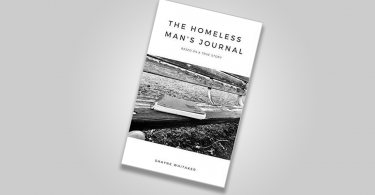We all have those books on our must-read list, and I finally got round to checking this one off of mine and found that this speculative feminist fiction still has a lot of relevance today.&nbs
We all have those books on our must-read list, and I finally got round to checking this one off of mine and found that this speculative feminist fiction still has a lot of relevance today.
Born from the anti-feminist movements of the 1980’s, Margaret Atwood’s The Handmaid’s Tale was first published in 1985. Drawing on the socio-political issues of the time, Atwood sets her novel in a dystopian future where women have lost all rights.
With the deep rooted themes and issues raised, Atwood’s Handmaid has a selection of awards under its belt and adaptations across different mediums including film, radio and opera. This is one novel that has undoubtedly stood the test of time, even with its future setting.
Speculation and suppression
The Handmaid’s Tale takes place in the Republic of Gilead, a heavily militarised society held within a bordered town, built on the old land of America. After a state of political upheaval, the government was overthrown by a Christian reformation regime.
The religious faction which has taken over strips women of all rights. We learn that our female narrator loses her job, her money, and even her family. Under the new regime women are not even permitted to read or be educated. Patriarchy and religion have taken over, binding people within conservative morals and strictly maintained classes.
With a drastic decline in birth rates, caused by pollution, nuclear waste, and sexually transmitted diseases, many women are now sterile. Preserving the procreation of the ruling class, therefore, is of the utmost importance to society.
Fertility and freedom
Our story comes from a female protagonist, who does not disclose her name. She is known as Offred (meaning of-Fred, the name of her Commander). She is bound to serve as a ‘handmaid’ who’s only purpose is to produce a child for a couple of the ruling class who have not been able to conceive.
Before the Republic of Gilead came into power, Offred and her husband tried to escape. She was captured and taken to ‘The Aunts’ to be trained as a Handmaid, she may never see her daughter again and her husband is most likely dead.
Chosen for her proven fertility, those who were less fortunate are forced into the Colonies, where they must work until they will most likely die from toxic exposure. Under the new regime, women of a lower class who cannot bear children are essentially disposable.
The Handmaid’s must have sex with their Commanders during a ritual known as “the Ceremony” where the Handmaid is shrouded in red, and held between the legs of the wife. This is to be their role in life until a child is produced, when they will move onto another couple, or they prove infertile and are sent to the Colonies.
The Commander begins a lewd relationship with Offred, full of banned items, like women’s fashion magazines and hand lotions, and even a visit to a secret underground brothel, which mimics the promiscuity of the past.
Meanwhile, the Commander’s wife elicits a sexual arrangement between Offred and their driver Nick, furthering her chances of a child. However, a true relationship begins to develop between them.
Through another handmaid, Offred learns of an underground network, known as Mayday, who plans to overthrow the Gilead regime. The Commander’s wife finds out about the relationship between her husband and the Handmaid, and her story ends as she is taken away by men from the secret police. Nick urges Offred to trust them, as they are part of the Mayday resistance.
The novel itself closes by describing that The Handmaid’s Tale is a transcription of cassette tapes found from Gilead. The epilogue is taken from a speech given in a future society studying the fall of the Republic of Gilead, where equal rights and freedom have been restored.
Society and sexuality
In the Handmaid’s dystopia the inequality between the genders are intensified. Atwood’s novel demonstrated the continued need for feminism and the advocacy of women’s rights, something that is still relevant today.
Throughout the novel, one thing that becomes apparent is the lack of comradery between women. Rather than being drawn together through their subjugation, they turn against each other, despite their integral parts within society.
During their training Handmaids target each other for the promiscuous behaviour of their past lives, although they are brought together by each birth. Once placed in a home, they are considered sluts by the Wives and Marthas, older women who perform the domestic tasks of the household.
Each group has no empathy except for their own, marking their solitary place and oppression. Their compulsory uniforms highlight this, dividing both gender and class.
Sexuality becomes a striking question within The Handmaid’s Tale. Homosexuality is punishable by execution, abortion doctors are killed, and sexual acts are restricted to a choreographed ritual. Sex is used to exert power, yet it is also feared for it cannot be controlled.
Throughout the novel and its diverse characters, Atwood explores different feminist viewpoints. From a fear of feminism, to a need for advocacy to continue, many of these themes are still relevant today. This makes The Handmaid’s Tale a worthwhile read for anyone looking to expand their perception of women and sexuality within society.
What do you think? Have your say in the comments section below.
Image: Copyright: Das Blaue Sofa / Club Bertelsmann. (Blaues Sofa/Flickr)








